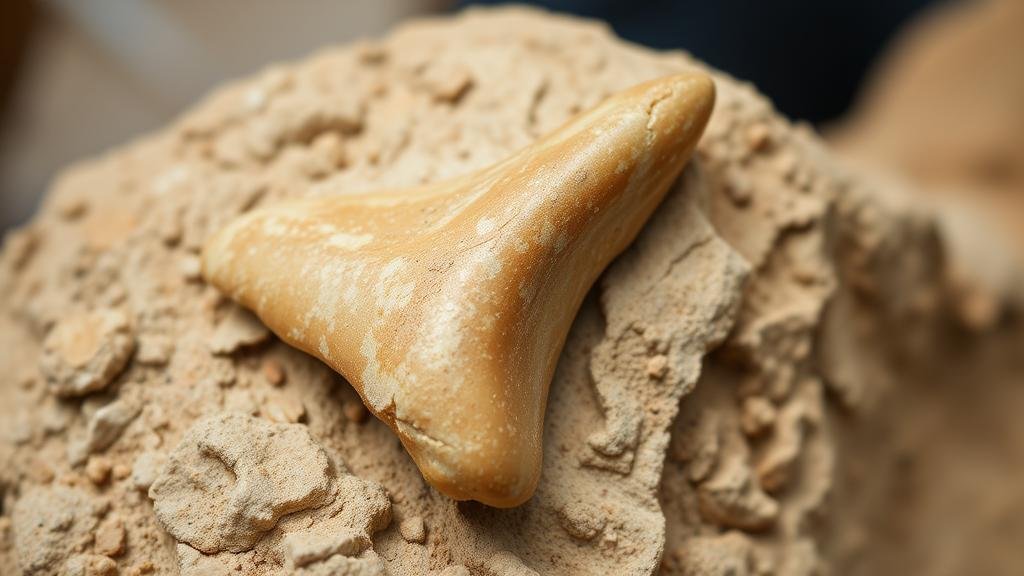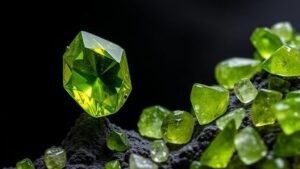Discovering ancient shark tooth fossils in the coastal plains of South Carolina.
Discovering Ancient Shark Tooth Fossils in the Coastal Plains of South Carolina
The coastal plains of South Carolina, known for their rich geological history, offer a treasure trove of ancient shark tooth fossils. For rockhounds and mineral collectors, these fossils not only represent a fascinating connection to our planets prehistoric past but also provide insights into the evolution of marine life. This article serves as a comprehensive guide to discovering, collecting, and understanding these unique fossils.
The Geological Context
The coastal plain of South Carolina is situated within a geological framework that dates back to the Cretaceous period, roughly 145 to 66 million years ago. During this time, the region was covered by a vast inland sea, fostering a rich marine ecosystem dominated by diverse shark species. Notably, fossil deposits found in areas such as the Francis Marion National Forest and the beaches of Edisto Island contain thousands of shark tooth fossils, including those of species like Carcharocles megalodon, a prehistoric shark that could grow up to 60 feet in length.
Types of Shark Tooth Fossils
Shark teeth are one of the most commonly found fossils in South Carolina. Here are some prevalent types that collectors can discover:
- Megalodon Teeth: Measuring up to 7 inches, these fossils are among the largest and most sought after.
- Great White Teeth: These are identifiable by their serrated edges and typically measure 2 to 3 inches in length.
- Tiger Shark Teeth: More triangular in shape, these fossils often have a distinctive banded pattern.
- Sand Tiger Shark Teeth: Smaller and narrow, these teeth can measure about 1 inch and are often found in sandy sediments.
Finding shark tooth fossils can be both fulfilling and educational. Here are some practical tips for collectors:
- Choose the Right Locations: Popular sites include the banks of rivers, creek beds, and shallow coastal waters. Areas like the Ashley River and the beaches at Folly Beach are renowned for yielding shark teeth.
- Visit After Storms: Natural events such as heavy rains or storms can erode soil and sediment, exposing hidden fossils.
- Equip Yourself Properly: Use tools like a trowel, sifting screens, and a bucket. A good pair of water shoes and a net can also come in handy when working in rivers.
- Know What to Look For: Familiarize yourself with common shark tooth features, such as shape, color (usually black to brown due to mineralization), and serrated edges.
Preservation and Display
Once you have successfully collected some fossils, the next step is preservation. Here are some helpful methods:
- Cleaning: Use a soft brush and water to remove dirt. Avoid harsh chemicals that could damage the fossils.
- Storage: Keep your fossils in individual containers to prevent scratching. Consider using display cases that showcase their beauty while remaining transparent and dust-free.
- Documentation: Keep a log of your finds, including location and any identifying characteristics, to track your collection over time.
Real-World Applications
The practice of fossil collecting is not just a hobby; it offers practical applications in paleontology and education. Shark teeth contribute to our understanding of evolutionary biology and help scientists reconstruct ancient environments. For example, studying the morphology of Carcharocles megalodon teeth helps paleobiologists infer dietary preferences and environmental adaptations of these massive predators. Educational institutions often utilize fossils in curricula to engage students in earth sciences.
Conclusion: Dive Into the Adventure
Exploring the coastal plains of South Carolina offers rockhounds and mineral collectors a unique adventure. From uncovering ancient shark teeth to understanding their historical significance, the experience is enriching and rewarding. As you embark on your collection journey, remember to respect the environment and follow local regulations regarding fossil collection. With the right tools, knowledge, and a bit of patience, you can unearth a piece of our planets incredible history.



